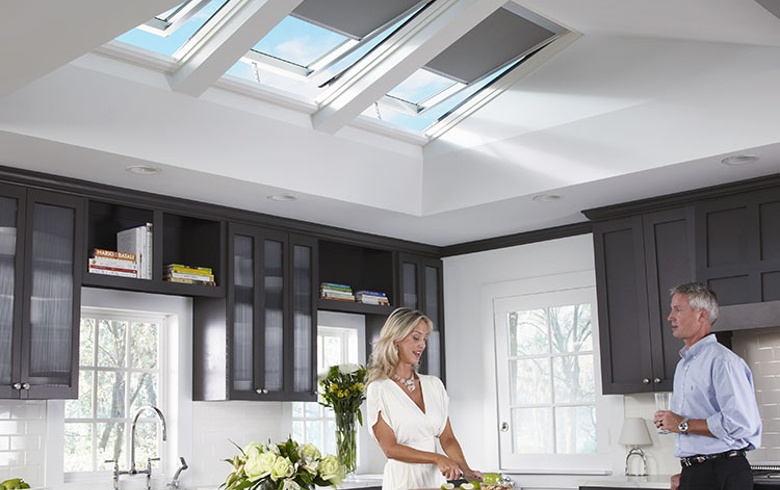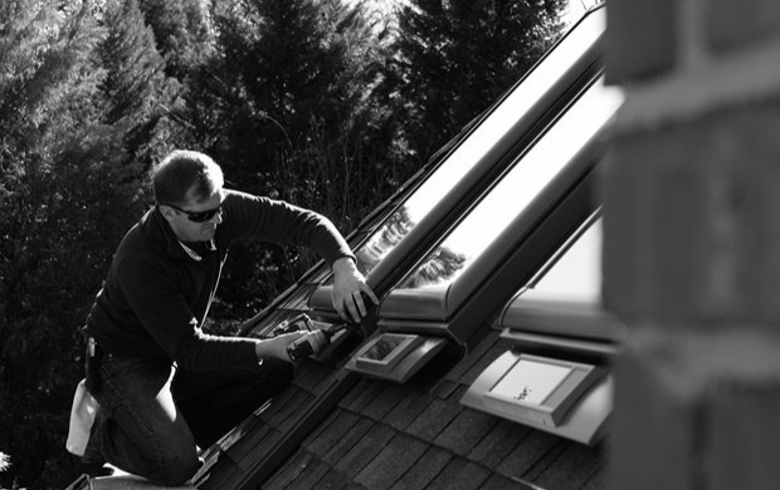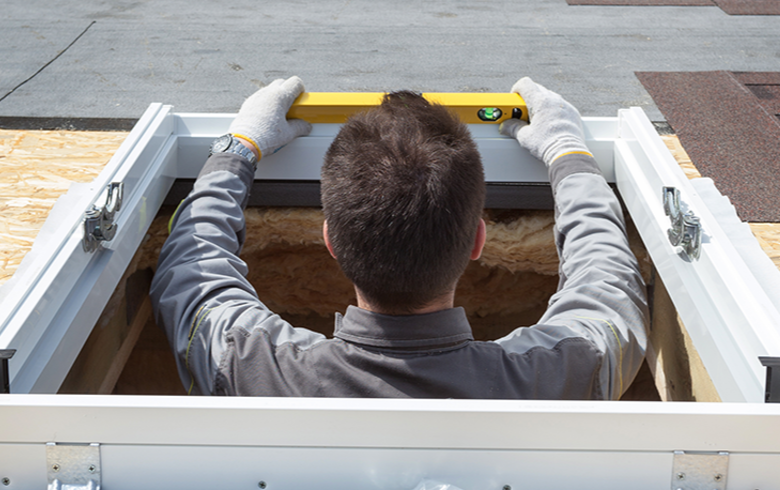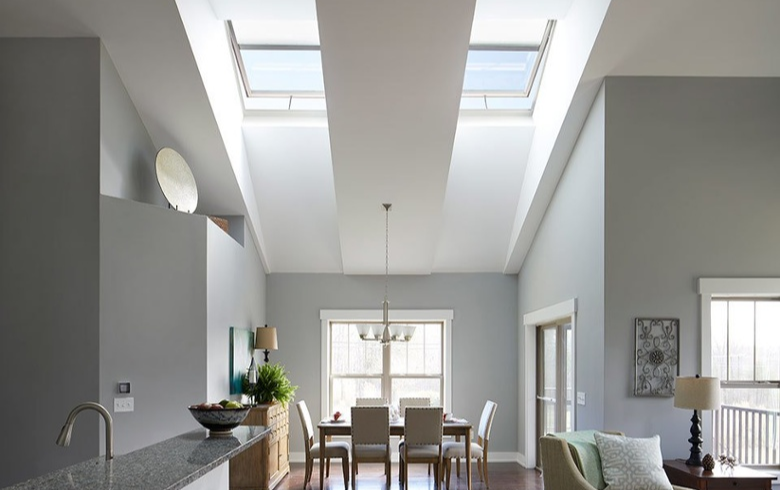Here at VELUX, we're a little bit on the goody-goody side. We're all about staying in line with state- and nation-wide building codes and regulations in regard to our skylights.
For one reason, it allows us to stay in business. For another, it ensures the homes and buildings that feature our skylights stay structurally sound as well as energy efficient.
In California, the building codes are written into a bit of legislation called Title 24. And there are a few exceptions in there regarding skylights and other types of fenestration you'll want to make sure you're up to date on.
What Is Title 24?
If you're working in California, you may already be familiar with Title 24. But just to make sure everyone's up to speed, Title 24 of the California Code of Regulations (a.k.a. the California Building Standards Code a.k.a. Title 24) contains the regulations that govern the construction of buildings in California.
Among these regulations are the California electric, mechanical, plumbing, and energy codes as well as codes for working with existing and historical buildings and codes for complying with green building standards.
If you go through these codes, you'll find general building design and construction requirements relating to fire and life safety, structural safety, and access compliance. These provisions also provide minimum standards to safeguard life or limb, health, property and public welfare. These minimum standards are met by regulating and controlling the design, construction, quality of materials, use and occupancy, location and maintenance of all buildings and structures, as well as certain equipment.
If you'd like more information on the specifics of these codes, you can visit the California Building Standards Commission (CBSC) website then click "CODES."
In order to ensure you're compliant with Title 24, you must assess your work through one of two methods:
- The Title 24 prescriptive method, where you go through each aspect of the building, one at a time, to verify that that aspect is up to code. This is the simplest, most straight-forward way to meet Title 24 requirements.
- The Title 24 performance method, where the energy consumption of the entire building is considered at once by a computer program that calculates energy trade-offs to find the most cost-effective method to satisfy Title 24 codes. While this method is a bit more complicated, it is the more flexible of the two options and may ultimately save you the most in construction costs.
Title 24 And Skylights
According to Title 24, a skylight is defined as "a fenestration installed on a roof less than 60 degrees from the horizontal" and the skylight type must be either glass mounted on a curb, glass not mounted on a curb, or plastic (assumed to be mounted on a curb).
In the codes, skylights are addressed in conjunction with other types of fenestration, like vertical windows and glass doors. It establishes rules for implementing them, as well as their labeling and certification, as they relate to
- U-factors (the rate of heat loss),
- Solar heat gain coefficients (SHGCs),
- Visible transmittance (the fraction of visible light transmitted through windows), and
- Air leakage (infiltration of outside air entering the building).
All of these rules for implementation are to ensure that not only is the building structurally sound, but that it's also as energy efficient as possible.
What Is The Title 24 Exemption?
Title 24 actually has many exemptions built into its codes, but there's one (well, really, four) in particular that affects fenestration and skylights that we'd like to focus on.
According to Title 24, only a certain percentage of any given building may feature fenestration, or windows and doors on its elevations. For example, the maximum total fenestration area of a building, including west-facing skylights tilted in any direction when the pitch is less than 1:12, cannot exceed the percentage of conditioned floor area. This is because when fenestration exceeds the set amount, the building not only becomes less energy efficient, but is also not as stable or equipped to withstand natural disasters.
Additionally, the area weighted average U-factor and SHGC requirements of the initially installed fenestration products is outlined in Title 24's TABLE 150.1-A, along with Sections 110.6(a)2 and 110.6(a)3.
In these sections, Title 24 also outlines the exceptions to these codes:
- Exception #1: For each dwelling unit, up to 3 square feet of new glazing area can be installed in doors and up to 3 square feet of new tubular skylights with dual-pane diffusers (like VELUX's Sun Tunnel Skylights) are not required to meet the U-factor and SHGC requirements.
- Exception #2: For each dwelling unit, up to 16 square feet of new skylight with a maximum U-factor of 0.55 and a maximum of SHGC of 0.30 is allowed.
- Exception #3 regards fenestration containing chromogenic type glazing. It's to be considered separately from other fenestration and must be used with automatic controls to modulate the amount of solar gain. Additionally, area-weighted average with other fenestration that is not chromatic shall not be permitted.
- Exception #4: In dwelling units that contain unrated site-built fenestration that meets the maximum area restriction, the U-factor and SHGC can be determined in accordance with the Nonresidential Reference Appendix NA6 or by using the default values in TABLE 110.6-A and TABLE 110.6-B, which can be found on page 107 of this PDF.
How This Affects You
The main exceptions concerning VELUX and VELUX installers are the first two, regarding additional tubular and regular skylights.
The first one says, in many more words than necessary, that you can add up to 3 square feet of new sun tunnel skylights without regard for the normal U-factor and SHGC requirements.
The second one says that, in existing buildings, up to 16 square feet of new skylights can be installed, even if the typical fenestration limits have already been reached, so long as the newly installed skylights don't exceed an U-factor of 0.55 and a SHGC of 0.30. And don't worry: VELUX does offer skylights that meet these restrictions.
Remember those Title 24 assessment methods we talked about earlier? They're coming back into play. If you're utilizing the Title 24 prescriptive method to verify compliance, you won't need to receive approval to utilize these exceptions. However, if you're using the Title 24 performance method, you will need approval from the energy engineering group certifying the structure.
So, as you can see, these codes and exceptions are important to know about when you're installing skylights and sun tunnels in California! If you have any questions regarding Title 24, you can find more information by contacting your regional DSA office directly.





